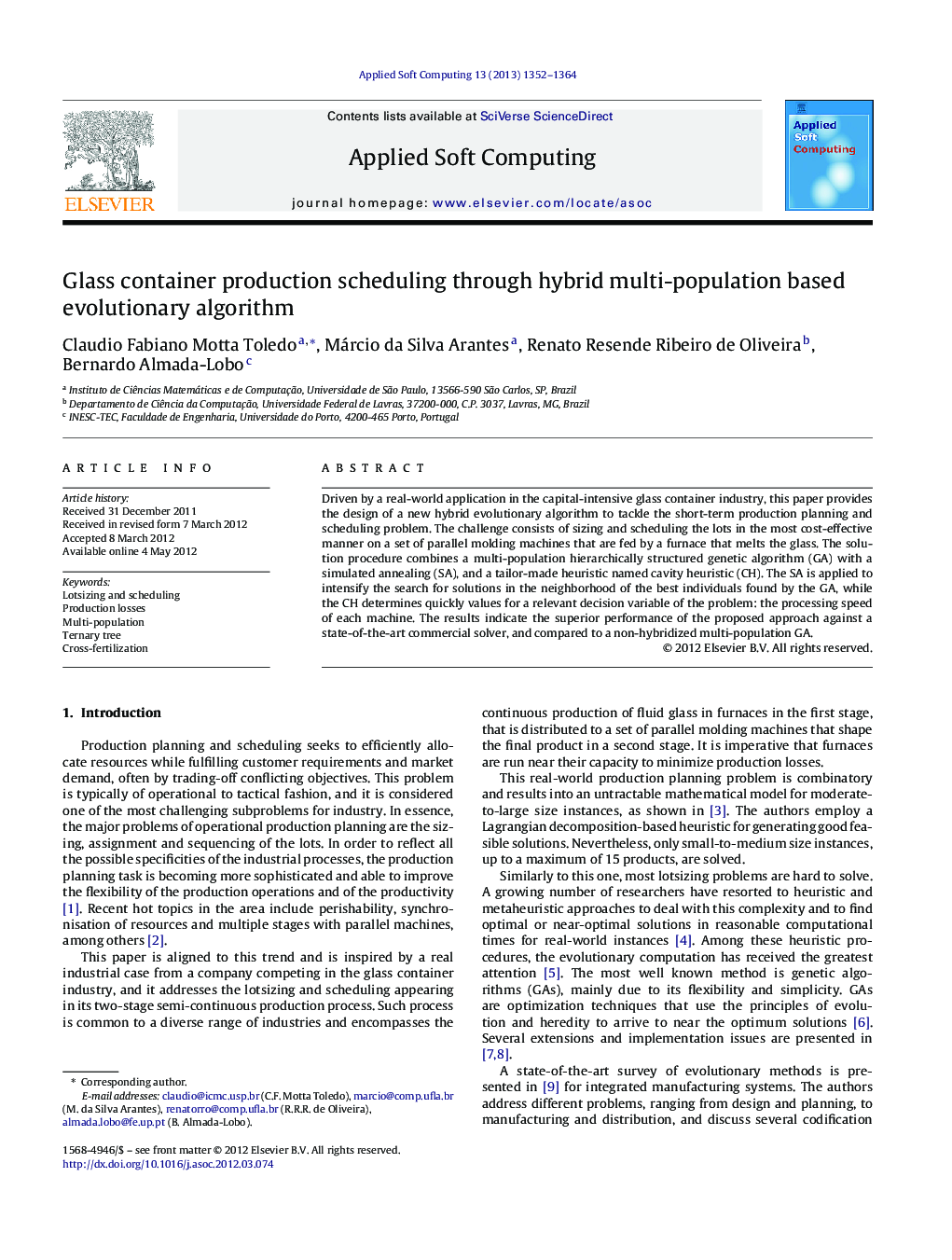| Article ID | Journal | Published Year | Pages | File Type |
|---|---|---|---|---|
| 496281 | Applied Soft Computing | 2013 | 13 Pages |
Driven by a real-world application in the capital-intensive glass container industry, this paper provides the design of a new hybrid evolutionary algorithm to tackle the short-term production planning and scheduling problem. The challenge consists of sizing and scheduling the lots in the most cost-effective manner on a set of parallel molding machines that are fed by a furnace that melts the glass. The solution procedure combines a multi-population hierarchically structured genetic algorithm (GA) with a simulated annealing (SA), and a tailor-made heuristic named cavity heuristic (CH). The SA is applied to intensify the search for solutions in the neighborhood of the best individuals found by the GA, while the CH determines quickly values for a relevant decision variable of the problem: the processing speed of each machine. The results indicate the superior performance of the proposed approach against a state-of-the-art commercial solver, and compared to a non-hybridized multi-population GA.
Graphical abstractDriven by a real-world application in the capital-intensive glass container industry, this paper provides the design of a new hybrid evolutionary algorithm to tackle the short-term production planning and scheduling problem. The challenge consists of sizing and scheduling the lots in the most cost-effective manner on a set of parallel molding machines that are fed by a furnace that melts the glass. The solution procedure combines a multi-population hierarchically structured genetic algorithm (GA) with a simulated annealing (SA), and a tailor-made heuristic named cavity heuristic (CH). The SA is applied to intensify the search for solutions in the neighborhood of the best individuals found by the GA, while the CH determines quickly values for a relevant decision variable of the problem: the processing speed of each machine. The results indicate the superior performance of the proposed approach against a state-of-the-art commercial solver, and compared to a non-hybridized multi-population GA. Figure optionsDownload full-size imageDownload as PowerPoint slideHighlights► We solve a short-term production planning and scheduling problem faced by a glass container manufacturing company. ► A hybrid evolutionary procedure is proposed combining a multi-population genetic algorithm with a simulated annealing and a tailor-made heuristic. ► Two sets of instances based on data provided by a case-study from the industry are solved. ► As the problem gets harder, the competitive advantage of the method increases, in terms of running times and solution quality.
